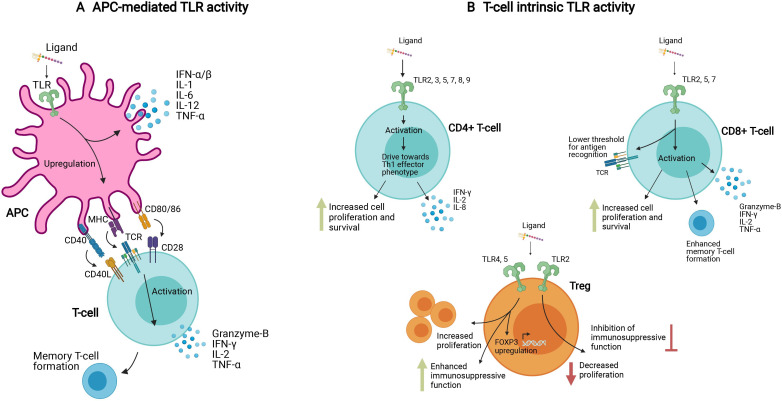Figure 1.
APC-mediated and T-cell intrinsic TLR activity. (A) TLR ligands can activate T-cells indirectly via APCs, where after ligand binding, TLR signaling via NF-kB induces an upregulation of MHC, costimulatory receptors, and proinflammatory cytokines. (B) TLR ligands can also induce T-cell activation directly via TLR molecules expressed on the T-cell surface. In CD4+ and CD8+ effector T-cells, this activation is characterized by proinflammatory cytokines, memory T-cell formation, enhanced sensitivity to antigens and suppression of regulatory T-cells. In regulatory T-cells, different TLR ligands can have contrasting effects, either enhancing or suppressing their function. These different mechanisms, APC-mediated and T-cell intrinsic, likely work in concert in response to systemic TLR ligand exposure. The T-cell intrinsic pathway can be specifically exploited in T-cell mediated treatments such as adoptive cell transfers. APCs, antigen-presenting cells; IL-1, interleukin 1; MHC, major histocompatibility complex; NF-kB, nuclear factor kappa B; TLR, Toll-like receptor; TNFα, tumor necrosis factor-α.

